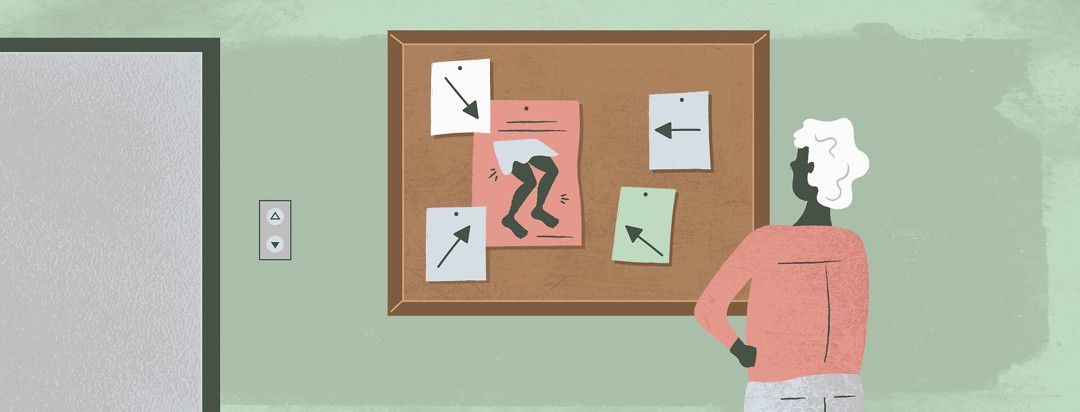Discovering My RLS
As a little kid, I complained about how my legs felt at night. My mom told me not to worry, that what I felt were growing pains. There’s not much more I remember about my childhood and teenage sleep other than being told I kicked and flopped around at night. This ran on my dad’s side of the family so no one thought anything about it.
A flyer caught my eye
Fast forward a couple of decades and I’m standing at an elevator bank in the hospital where I worked. It’s an area of the hospital where only staff go, so the bulletin boards are covered with flyers looking for participants for clinical trials. One flyer in particular caught my attention. A doctor was looking for people who:
- Felt strange sensations, cramps or twitches in the legs
- Had trouble sitting still in long meetings
- Had the urge to move their legs when sitting still
- Kicked in their sleep
The doctor named this as restless legs syndrome. What? There’s a name for this? I’ve got a syndrome? I jotted down the contact information and went on to my next meeting. Over the next few days I considered what to do next, and finally decided to call the number.
Attending an RLS support group meeting
A couple weeks later, I attended a support group led by this doctor. It was the first RLS support group ever held in this major city.
The room held about 25 people, including my girlfriend Judy. Neither of us knew until that night that we both had RLS. Like me, she was shocked to learn it was a recognized health condition, but she had figured out hers was controlled when she stopped eating sugar. I was still exploring ways to find relief.
We both marveled at the other people in the room. There was a couple in their 70s. She rode an exercise bike in the middle of the night next to the bed when her legs kept her awake. Her husband didn’t seem to mind.
A grandmother, mother, and daughter talked about how the symptoms were getting more severe with each generation. A well-known society lawyer talked about his years in and out of rehab because the only drugs that allowed him to sleep were also addictive. Most everyone in the room regularly got out of bed and walked around the house to calm their legs at night.
I never went back, feeling like my issues were nothing compared to the rest of the room.
The walking cure
Eventually, I stumbled on the “cure” for my RLS – exercise. As I got older, I started walking consistently. Over time, I learned that a daily 30-minute walk is the minimum for relief, 45 minutes is better, and 1 hour is best. I can’t skip more than 1 day or those weird twitchy feelings come back when I sit down at the end of the day.
Today, I’m glad that there’s a name what for runs in my family and that more people know about it. I know that RLS can come and go over the years, so I hope walking remains my “cure.”

Join the conversation